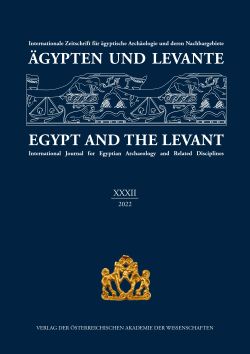
Ägypten und Levante 32, pp. 231-268, 2022/12/30
Internationale Zeitschrift für ägyptische Archäologie und deren Nachbargebiete
International Journal for Egyptian Archaeology and Related Disciplines
The petrographic investigations of imported vessels from Abydos, published a few years ago in “Egypt and the Levant,” 4 confirmed their origin from different regions of the Levant. In addition to vessels from Early Dynastic royal tombs and from Cemetery B, the samples also included five jars from Predynastic Cemetery U, especially from Tomb U-j. For the latter, such an origin had already become apparent from the archaeological point of view, as well as from NAA and XRF analyses when the material was first published 20 years ago. However, the interpretation of the results of petrographic investigations at the time neglected this option. The new series of samples from Abydos has since been supplemented by 13 additional vessels from U-j and other Cemetery U tombs. The analysis presented below leaves no doubt as to the Levantine origin of the jars and shows that an evaluation of analytical results based on a limited database can easily lead to misinterpretation, which has long hindered the archaeological discussion concerning the significance of these finds. In the case of the U-j jars, this is regrettable as this thus far unique finding is not only important for the understanding of the connections to the Levant from an Egyptian point of view, but also sheds light on the socio-economic developments in different regions of the Levant in the late 4th millennium BCE.
Keywords: Predynastic Egypt, Abydos, Levant, Early Bronze Age, trade, ceramics